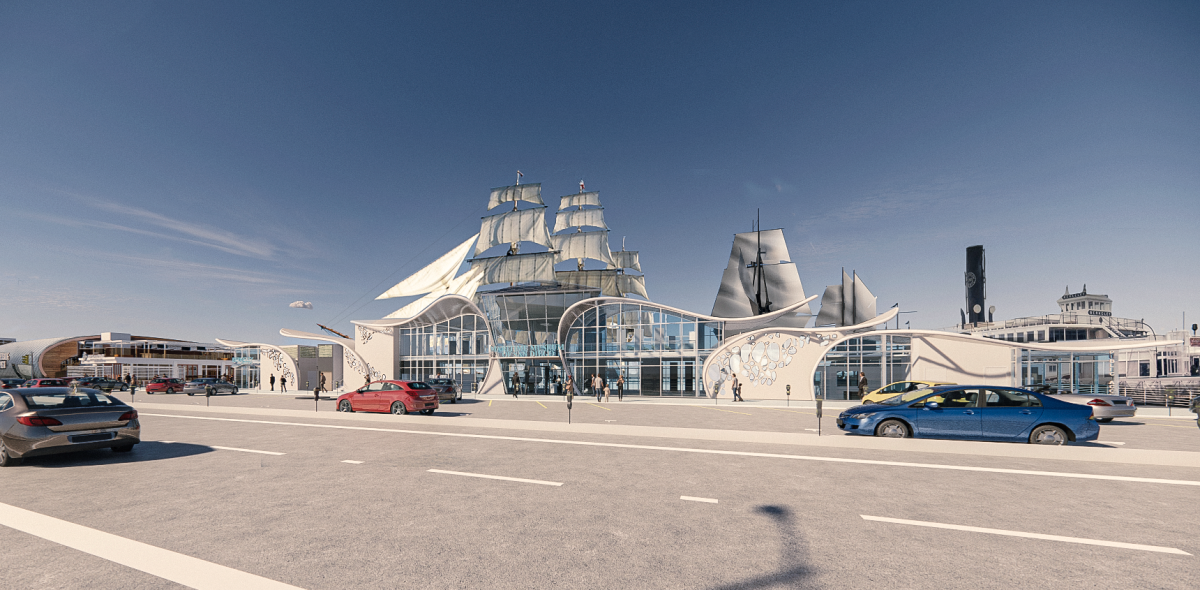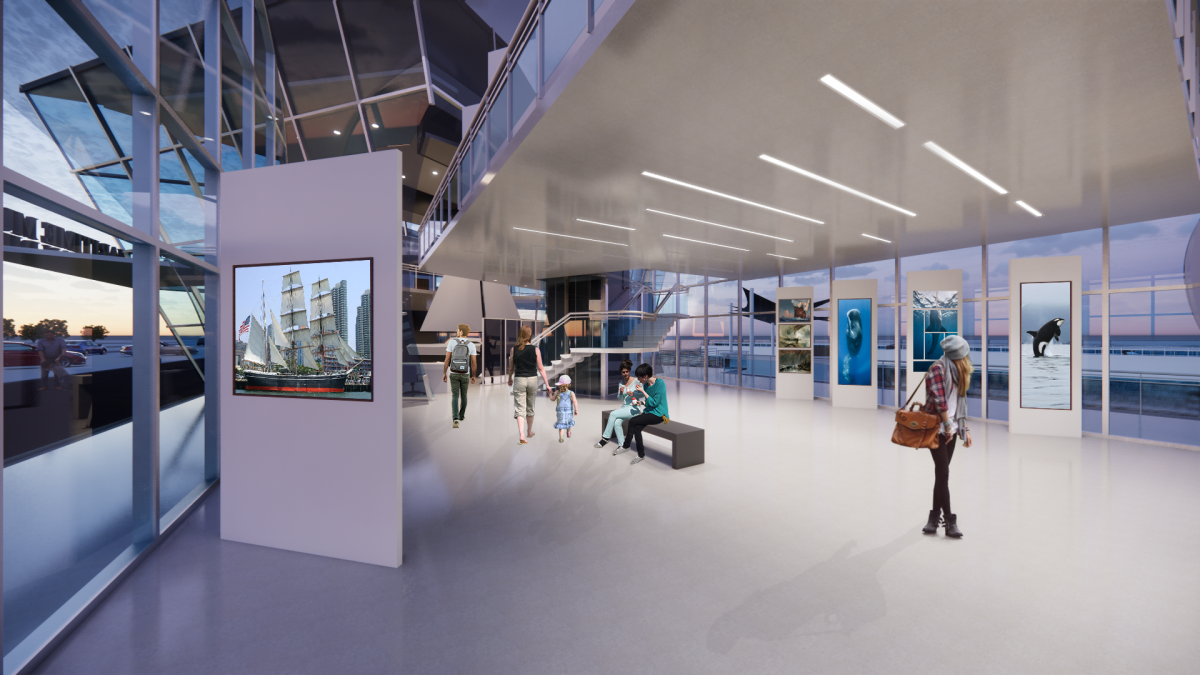$28-million expansion of Maritime Museum of San Diego would include an actual building

- Share via
SAN DIEGO — San Diego’s collection of historic vessels on the waterfront — from the Star of India to the Berkeley — have welcomed visitors for decades. But there’s always been one key element missing — an actual museum.
That could change with a proposal by the Maritime Museum of San Diego for a new 14,000-square-foot facility that would include galleries, a theater, public terraces and a signature cafe, all built over the water on an extended pier off the Embarcadero.
To make room for the new two-story museum space, the $28-million project would require moving the Maritime Museum’s nine historic vessels about 150 feet farther out into the bay. That relocation would also better protect the ships from extreme weather that can lead to especially turbulent water.
Port of San Diego commissioners got a preview of the redevelopment plans on Tuesday and agreed to initiate an environmental review. The port’s action, though, doesn’t constitute formal approval of the project, which would require future votes, including a decision on a new long-term lease to replace the current 40-year rental agreement.
“This is very exciting. I think it’s all fantastic,” said Commissioner Michael Zucchet.
Maritime Museum President Ray Ashley said the decision to pursue a major redevelopment project was inspired, in part, by feedback it received from the public. While the historic ship collection is called the Maritime Museum of San Diego, there is no actual museum building, which people find confusing, Ashley said.

“Most people’s understanding of what a museum is conditions them to believe it has to be inside a museum, so it’s been kind of confusing for some,” Ashley said in an interview. “Others who go to historic battlefields or colonial Williamsburg expect to see a moment in time.
“Because we’re both of those things, it’s not obvious what we are. When we started doing surveys of people who chose not to buy a ticket, the overwhelming response was, we weren’t given an accurate description of what to explore. So the purpose of this building is to create a proper context for all the historic vessels. It’s to fulfill expectations of what a museum experience is.”
The Maritime Museum is working with Tucker Sadler Architects, which designed the neighboring Portside Pier restaurant complex, to create a vision for the maritime building.
“The entrance to the building is shaped like the hull of a ship with waves breaking off the hull of the ship and are formed in a wave-like pattern,” said Tucker Sadler Chief Executive Greg Mueller. “The idea is to have a two-story building that you can see through it from the Embarcadero out to the water and to the museum and not to create an obstacle visually.”
To move the project forward, the museum will have to do an audit of the venue’s finances, and develop a more detailed plan of how the new museum would be operated.
A new pier or platform supported by pilings would have to be constructed to accommodate the proposed museum. That new platform, Ashley said, would be located where the Berkeley, an 1898 steam ferryboat, is currently docked.
The Maritime Museum‘s origins date to 1927 when the Star of India first came to San Diego. Ashley estimates that as many as 250,000 people a year visit the historic ships, a figure that includes special events.
A major fundraising campaign would have to be launched to move the project forward. The museum already has access to several million dollars in state funding that would be used to supplement private funds raised. It has raised about $2 million in private donations so far, Ashley said.
In addition to the approval of port commissioners, the Maritime Museum would also need buy-in from the California Coastal Commission. The proposal has been modified a number of times after coastal planners responding to preliminary presentations expressed some concerns about the project’s size.
The environmental review process alone could take at least a year or more. Ashley said he expects construction would last about a year.
More to Read
Sign up for Essential California
The most important California stories and recommendations in your inbox every morning.
You may occasionally receive promotional content from the Los Angeles Times.














